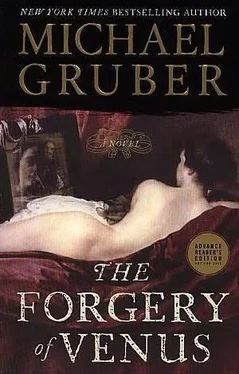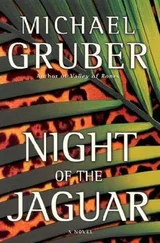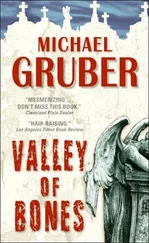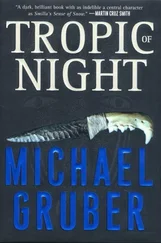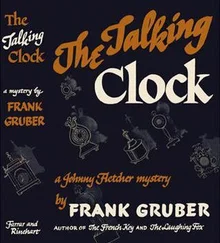It was, of course, not a restoration in any real sense. It was a forgery. I still loved it-how cheaply sold my long-protected virginity!
The first thing I had to do was to find someone who knew fresco plaster. I thought about my father and the St. Anthony job, his great fresco fiasco, on which a Mr. Belloto was our plaster guy. He looked about a hundred years old, the last man in America to wear a bowler hat, came to work in a suit and a tie with a diamond stickpin in it, changed into coveralls at the job site, kept the tie on. The deal was that some rich bastard son of the Church had given a dining hall to a seminary in Suffolk County and there was money to do a fresco of the life of the patron saint, and of course immediately Father was Michelangelo revived. This job was his bid for immortality, so the fresco had to be right, had to last for the ages, as long as Pompeii at least. I was the apprentice, so if the quattrocento ever rolled around again, I’d be set to cash in-crazy, of course, but thanks, Dad, it eventually came in real handy.
I spent the better part of that year-I was twenty-two-doing all the things that people do on a fresco besides the actual painting, under the hand mainly of Mr. Belloto. It’s not like plastering the kitchen. The trick is that your slaked lime has to be really old. You don’t want any unslaked lime in your mix because it might slake up on the wall and generate gas that’ll bubble the surface.
Footnote: immortality, in this case, lasted around ten years. There were over a hundred seminarians in there when we started, a number that sank to around six not too long after the Second Vatican Council finished trashing the grand old Tridentine Church. So the diocese sold the barn to a nondenominational retirement home that didn’t want scenes from the life of St. Anthony staring down at the crocks while they ate; they wanted the artworks of the residents up there, flowers and clowns and so forth, so they painted a nice peach color over the fresco. No great loss, as a matter of fact, it was typical Late Dad, beautifully drawn, utterly spiritless. I think even Mr. Belloto knew that; he used to grip my shoulder and sigh while viewing each giornata.
After asking around a little I found Signor Codognola, also about a hundred years old, and he said he had a trove of plaster from before the war-I think maybe he meant World War I. He was slow but good, worked with a couple of relatives, grandsons or great-grandsons, I don’t know, took them a week to get the trullisatio in, the coat that sticks to the lath, and another week to adhere the brown coat to it, what they call the arricciato . I didn’t even pretend to supervise; mainly I toured the city by foot and vaporetto, checking out all the Tiepolos I could find to pump up my sense of how he handled form and color. One of the great natural draftsmen, yeah, but almost over-slick. The famous comic book illustrators of the golden age were all Tiepoloesques. So I am right at home. But really, beautiful work with the small brush, used like a pen. I spent my time grinding colors and waiting for the brown coat to cure up.
Fresco work fixes your mind on a day at a time; all you think about is how you’re going to handle the next giornata . Obviously it was a lot easier for me because Tiepolo marked his giornata right on the cartoon. You have, let’s say, a section of fluffy cloud and a triangular chunk of blue sky between some clouds, and another lump of darker cloud, and that’s about all you can do in one day’s work-your giornata -on the wet plaster of the intonaco, or surface layer. We had modern scaffolds and lights, so no candle stuck on the head for Chaz. I just mixed my colors with lime water, set up the palette, and up I went. And Marco, or another one of the grandsons, helped pin up the cartoon and I pounced it with red chalk, and then we took off the cartoon and I incised the lines of chalk dust with a wooden stylus, and then they laid the intonaco and I painted on it wet, using the incised lines as guides.
It was like a gigantic paint-by-numbers, only in the style of Tiepolo; it looked clumsy from close up, but from the floor it looked like old Giambattista did it yesterday. It had that don’t-give-a-shit ease in it, true sprezzatura , total authority laying down the paint, like I’d been doing Tiepoloesque frescoes every day of my life. In the center, the Virgin exalted, the most important part; I took the liberty of giving her Lotte’s face, nice Jewish girl after all, or at least the Rothschild half, and why not, I’m sure Tiepolo stuck his honeys on ceilings all over Europe.
About three weeks into the project, say the middle of November, I got a surprise visit from my ex-father-in-law-I mean Lotte’s father, not the side-of-beef one. He was in Venice for a conference. Interesting guy, pushing eighty now but still active, had a long career in the UN diplomatic service, then moved on to art scholarship. Calls himself an amateur, but he’s written a lot, apparently quite respected in European art-history circles. Not one of those Rothschilds, as he likes to say, consequently went through a rough time as a kid, lost his family to the Nazis and survived by being sheltered in a convent in Normandy. Married an Italian woman; she had the one kid and then died, cancer, when Lotte was about twelve. He never remarried. Lotte had told him where I was and I sensed that this visit was in the nature of an inspection tour. I didn’t mind; I kind of wanted to know how I was too.
We had lunch at a little hole-in-the-wall place he likes near the Palazzo Grimani, a slow Venetian meal.
I asked him how Lotte and the kids were. He said, “The children are wonderful as always. They miss you. Rose believes that Big Italy, as she calls it, is on the subway somewhere near Little Italy. She has her own MetroCard now and threatens to come and visit you when she feels like it. Milo…well, what can one say? He is melancholy after this last relapse, but he has a tremendous brightness and courage that keeps breaking through. He said he hopes to live long enough to see you again.”
“Shit!”
“Yes, life is sometimes shit. Lotte is holding up despite…perhaps you haven’t heard. Jackie Moreau is dead.”
“What? Oh, God! How?”
“Murdered, in Rome. Stabbed and dumped in the river. The police believe it was a robbery gone wrong.”
“Christ! She must be devastated.”
“Yes. He must be her oldest friend, you know. As I say, life is sometimes shit, but we are obliged to keep living. Tell me about the work you are doing here.”
I was happy to change the subject, and we talked about Tiepolo for a while; he said it was a shame I’d not had a chance to see the frescoes in the prince-bishop’s palace in Würzburg, which were in his opinion the best things the artist had ever done.
“I suppose your next project will be something by the Guardis,” he said with a smile.
“Why the Guardis?”
“Didn’t you know? Tiepolo married Francesco Guardi’s daughter. His sons, Giovanni Domenico and Lorenzo, both became pretty fair painters. One of the few cases where talent bred true, and isn’t this one of the great conundrums of human existence? From whence it comes. I, for example, have a passionate love of painting, but it would never occur to me to try to paint, or rather it did occur to me, unfortunately. After the war I spent an unhappy year in art school, until it became clear that I would never amount to anything in that line. And Lotte too, as you know, tried her hand, and the antitalent was also inherited, poor child. And you of course are the counterexample.”
“I’d say the counter-counterexample. I inherited a load of talent from a man who never used what he’d been given properly, and guess what? I don’t use it properly either.”
Читать дальше
